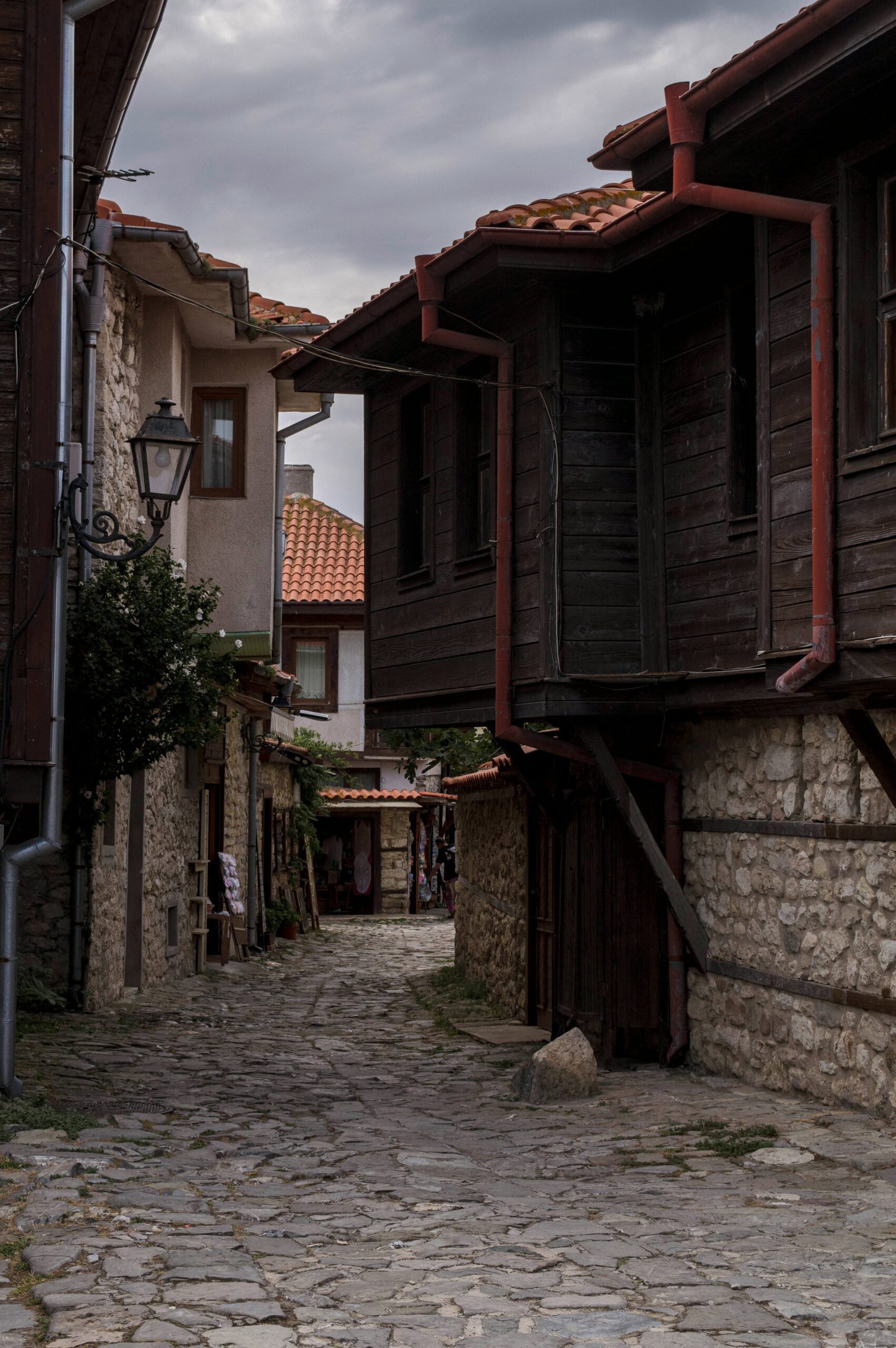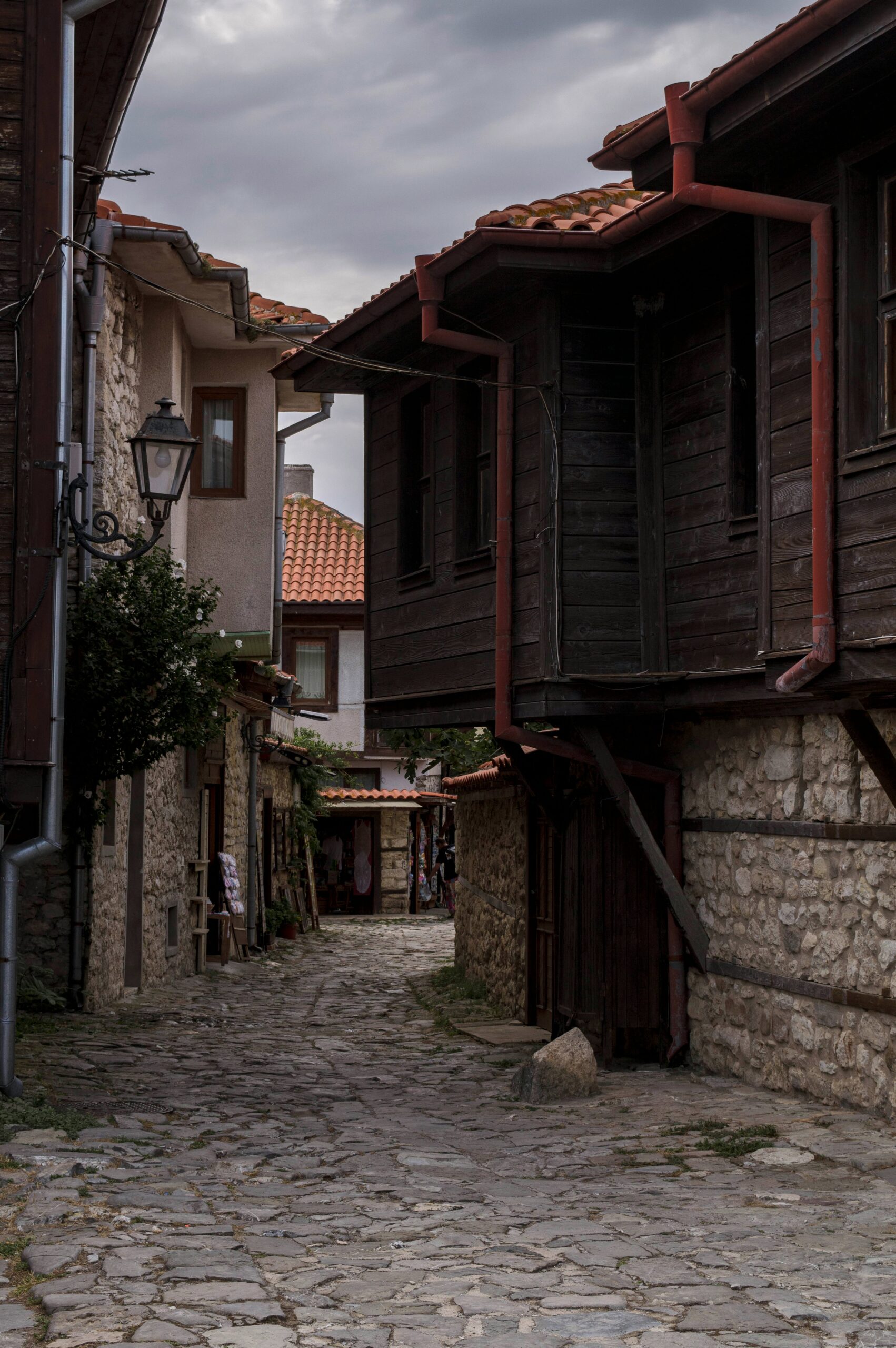Introduction
Exploring the best of Europe, a continent rich in culture, history, and breathtaking landscapes, offers an array of experiences for every traveler. From the romantic allure of Paris to the ancient ruins of Rome, each destination presents a unique tapestry of sights, sounds, and tastes. This travel guide aims to provide a comprehensive overview to help you navigate and make the most of your European adventure.
With centuries of history and a blend of diverse cultures, Europe is a treasure trove of marvels waiting to be explored. Whether you’re drawn to the medieval castles of Scotland, the vibrant nightlife of Berlin, or the serene fjords of Norway, each country has its own distinct charm. This guide will take you through some of the best destinations, shedding light on what makes each one special and how you can experience them to the fullest.
Our journey begins in Western Europe, where you’ll discover the iconic landmarks of France, the eclectic neighborhoods of Spain, and the artistic heritage of Italy. Moving eastward, we’ll explore the rich traditions of Central Europe, from Germany’s fairy-tale villages to Austria’s majestic Alps. Northern Europe beckons with its pristine nature and innovative cities, while Southern Europe offers sun-soaked beaches and timeless architecture.
Prepare to embark on an unforgettable expedition across Europe, as we delve into the must-visit cities, hidden gems, and practical travel tips that will enhance your experience. Whether you’re a first-time visitor or a seasoned traveler, our guide is designed to inspire and inform, ensuring you make the most of your time on this captivating continent.

Exploring the Best of Europe By Planning Your European Adventure
Embarking on a European adventure requires meticulous planning to ensure a seamless experience. The first step involves setting a realistic budget. Europe offers a wide range of travel experiences, from budget-friendly hostels to luxury hotels. Consider your accommodation preferences, daily food expenses, transportation costs, and entrance fees for attractions. Budgeting effectively can help you avoid financial stress and make the most of your trip.
Choosing the Right Travel Insurance
Securing appropriate travel insurance is crucial. It protects against unforeseen circumstances such as medical emergencies, trip cancellations, and lost luggage. Compare various insurance plans and select one that provides comprehensive coverage suited to your needs. Ensure that the plan covers all countries you intend to visit during your European journey.
Exploring the Best of Europe By Understanding Visa Requirements
Visa requirements vary significantly across European countries. Research the specific entry regulations for each destination on your itinerary. For instance, the Schengen Area allows travelers to move freely between 26 European countries with a single visa. However, some countries outside the Schengen Area have different requirements. It’s recommended to apply for visas well in advance to avoid last-minute complications. An infographic summarizing visa requirements for the Schengen Area and non-Schengen countries can be particularly helpful.
Best Time to Visit Europe
Europe’s climate varies greatly, so consider seasonal variations when planning your trip. Spring (April to June) and autumn (September to November) are generally ideal times to visit, offering milder weather and fewer crowds. Summer (July to August) boasts warm weather but can be crowded and expensive. Winter (December to February) is perfect for skiing enthusiasts and those interested in festive holiday markets. Additionally, major events such as Oktoberfest in Germany or the Cannes Film Festival in France can influence your travel dates.
Exploring the Best of Europe By Creating a Travel Itinerary
Designing a well-structured itinerary is essential for making the most of your European adventure. Prioritize must-see attractions but also leave room for spontaneity. Flexibility is key; sometimes the best experiences come from unplanned detours. Allocate sufficient time for each destination to avoid rushed visits. Consider using travel planning apps to organize your itinerary efficiently.
Must-Visit Cities
Europe is a continent rich in history, culture, and breathtaking landscapes, making it a prime destination for travelers. Among its myriad of cities, a few stand out as must-visit locales due to their unique blend of historical landmarks, cultural experiences, and vibrant atmospheres. Here are some of the top cities that should be on every traveler’s list.
Paris
Known as the “City of Light,” Paris is synonymous with romance and sophistication. Key attractions include the iconic Eiffel Tower, the world-renowned Louvre Museum, and the historic Notre-Dame Cathedral. Visitors can also stroll along the charming streets of Montmartre or take a leisurely cruise on the Seine River. Paris offers an exquisite culinary scene, from quaint cafes to Michelin-starred restaurants, making it a haven for food enthusiasts.
Rome
Rome, the “Eternal City,” is a treasure trove of ancient history and stunning architecture. The Colosseum, the Roman Forum, and the Pantheon are just a few of the must-see historical sites. The Vatican City, home to St. Peter’s Basilica and the Sistine Chapel, is a significant religious and cultural hub. Rome’s lively piazzas, such as Piazza Navona and Campo de’ Fiori, provide a glimpse into the city’s vibrant street life. Don’t miss the chance to indulge in authentic Italian cuisine, from pasta and pizza to gelato.
Click here to buy your Europe best products using this affiliate link
Barcelona
Barcelona offers a unique blend of modernist architecture and Mediterranean charm. The works of Antoni Gaudí, including the Sagrada Familia, Park Güell, and Casa Batlló, are architectural marvels that define the city’s aesthetic. The bustling La Rambla street and the historic Gothic Quarter are perfect for exploring shops, eateries, and street performances. Barcelona’s beaches provide a relaxing escape, while its culinary scene, famed for tapas and seafood, is sure to delight.
Amsterdam
Amsterdam is renowned for its picturesque canals, historic buildings, and vibrant cultural scene. Key attractions include the Anne Frank House, the Van Gogh Museum, and the Rijksmuseum. The city’s cycling culture offers a unique way to explore its charming neighborhoods and parks, such as Vondelpark. Amsterdam’s thriving art scene, cozy cafes, and lively markets, like the famous Albert Cuyp Market, make it a dynamic destination for travelers.
Prague
Prague, known as the “City of a Hundred Spires,” boasts a fairy-tale charm with its stunning Gothic and Baroque architecture. The historic Prague Castle, the Charles Bridge, and the Old Town Square with its Astronomical Clock are quintessential landmarks. The city’s vibrant arts scene, intriguing history, and quaint cobblestone streets create an enchanting atmosphere. Visitors can also enjoy local Czech cuisine and world-famous beer in the city’s numerous pubs and restaurants.
Each of these cities offers a unique and unforgettable experience, making them essential stops on any European travel itinerary.
Exploring the Best of Europe With Hidden Gems and Off-the-Beaten-Path Destinations
When planning a trip to Europe, iconic cities like Paris, Rome, and London often dominate the itinerary. However, Europe’s charm extends far beyond its famous landmarks. Exploring lesser-known destinations can offer a more authentic and enriching experience. These hidden gems, often overshadowed by their more famous counterparts, offer a unique glimpse into the continent’s diverse culture and natural beauty.
One such destination is Hallstatt in Austria. Nestled between the towering Dachstein Alps and the serene Hallstätter See, Hallstatt is a picturesque village that seems to spring straight from a fairytale. This UNESCO World Heritage site is renowned for its idyllic landscapes, historic salt mines, and charming 16th-century alpine houses. Visitors can enjoy tranquil boat rides on the lake, explore the Ice Cave and 5 Fingers viewing platform, or simply wander through the cobblestone streets taking in the stunning views.
Sintra in Portugal is another captivating destination that often flies under the radar. Located just a short train ride from Lisbon, Sintra is a town brimming with whimsical palaces, lush gardens, and mystical forests. The colorful Pena Palace, the romantic Quinta da Regaleira with its enigmatic initiation wells, and the medieval Moorish Castle all contribute to Sintra’s enchanting atmosphere. Hiking through the Sintra-Cascais Natural Park offers breathtaking vistas and a chance to connect with nature.
The Faroe Islands, an archipelago situated between Iceland and Norway, offer an entirely different kind of allure. This remote destination is a paradise for nature lovers, with its dramatic cliffs, verdant valleys, and cascading waterfalls. The islands are home to a rich birdlife, including puffins and fulmars, making it a prime spot for birdwatching. Hiking trails like the one leading to the Kallur Lighthouse on Kalsoy Island provide awe-inspiring views of the rugged coastline. The Faroe Islands’ unique blend of natural beauty and cultural heritage make it a must-visit for those seeking an off-the-beaten-path adventure.
These hidden gems of Europe not only provide breathtaking scenery and unique experiences but also offer a more intimate connection with the local culture. By venturing beyond the popular tourist destinations, travelers can discover the true essence of Europe and create unforgettable memories.
European Cuisine: A Culinary Journey
European cuisine is a tapestry of flavors, techniques, and traditions that span the continent, reflecting the rich cultural diversity of its regions. From the sophisticated delicacies of France to the hearty fare of Greece, each country offers unique culinary experiences that are integral to its cultural identity.
Click here to buy your Europe best products using this affiliate link
French Cuisine
Renowned for its elegance and refinement, French cuisine is a cornerstone of European culinary arts. Must-try dishes include coq au vin, a rustic chicken stew braised in red wine, and bouillabaisse, a flavorful fish soup from the Provence region. French pastries, such as croissants and éclairs, are also world-famous. Pair these delights with a glass of Bordeaux or Burgundy wine to complete the experience.
Exploring the Best of Europe By Italian Cuisine
Italy’s culinary heritage is celebrated globally, with iconic dishes such as pizza, pasta, and risotto forming the core of its cuisine. Regional specialties like Neapolitan pizza, Roman carbonara, and Venetian risotto al nero di seppia highlight the diversity within Italian cooking. Italian meals are often complemented by local wines, such as Chianti or Prosecco, emphasizing the importance of food and drink in Italian culture.
Spanish Cuisine
Exploring the best of Europe with Spanish cuisine is characterized by bold flavors and communal dining experiences. Paella, a saffron-infused rice dish with seafood or meat, is a must-try, along with tapas, small plates that encourage socializing over food. Traditional beverages like sangria and cava perfectly accompany these dishes. Spain’s culinary traditions reflect its history and regional influences, making it a vibrant part of European cuisine.
Greek Cuisine
Greek cuisine is known for its use of fresh ingredients and simple yet flavorful preparations. Dishes like moussaka, a layered eggplant and meat casserole, and souvlaki, skewered and grilled meat, are quintessential. Greek salads with olives and feta cheese, accompanied by a glass of ouzo or retsina, illustrate the importance of food in Greek social and cultural life.
In conclusion, Exploring the best of Europe as the diverse culinary traditions of Europe offers a deeper understanding and appreciation of its varied cultures. Each region’s cuisine is a reflection of its history, geography, and way of life, making food an essential aspect of any travel experience in Europe.
Travel Tips and Practical Information for Exploring the Best of Europe
Embarking on a journey through Europe can be an exciting adventure, but having the right information can make your travels smoother and more enjoyable. Understanding transportation options, accommodation choices, and safety tips can significantly enhance your experience. Here’s a comprehensive guide to help you navigate Europe effectively.
Transportation Options
Europe is well-connected through a vast network of trains, planes, and buses. Trains are a popular choice for their convenience and scenic routes. The EuroRail pass offers unlimited travel on most European trains, making it a cost-effective option for frequent travelers. For longer distances, budget airlines like Ryanair and EasyJet provide affordable flights, though be mindful of baggage fees. Buses, such as those operated by FlixBus, are an economical alternative, especially for shorter journeys.
Accommodation Choices
Europe provides a wide range of accommodation options to suit various budgets. Hotels offer comfort and amenities, with price ranges from luxury to budget. Hostels are a great choice for solo travelers or those on a budget, providing both dormitory and private rooms. Airbnb offers a unique experience, allowing travelers to stay in local homes or apartments, often at a lower cost than hotels. It’s advisable to book accommodations in advance, especially during peak tourist seasons.
Safety Tips for Exploring the Best of Europe
While Europe is generally safe for travelers, it’s important to stay vigilant. Keep an eye on your belongings, especially in crowded places. Use hotel safes for valuables and avoid carrying large amounts of cash. Familiarize yourself with the local emergency numbers, and consider purchasing travel insurance for added peace of mind. Stay informed about any travel advisories or local regulations that might affect your trip.
Local Transportation Passes and Travel Apps
Investing in local transportation passes can save both time and money. Cities like Paris, Berlin, and Rome offer passes that provide unlimited rides on public transport for a set period. Travel apps such as Google Maps, Citymapper, and Rome2rio can help navigate public transportation systems efficiently. These apps provide real-time updates and alternative routes, ensuring you reach your destination with ease.
Common Travel Phrases
Learning a few common phrases in the local language can enhance your travel experience. Here are some basic phrases in several European languages:
| English | French | German | Spanish | Italian |
|---|---|---|---|---|
| Hello | Bonjour | Hallo | Hola | Ciao |
| Thank you | Merci | Danke | Gracias | Grazie |
| Yes | Oui | Ja | Sí | Sì |
| No | Non | Nein | No | No |
| Excuse me | Excusez-moi | Entschuldigung | Perdón | Scusa |
These travel tips and practical guidelines will help ensure a seamless and memorable European adventure. Happy travels!
Cultural Etiquette and Local Customs for Exploring the Best of Europe
When traveling across Europe, understanding and respecting local customs and cultural norms is paramount. Europe, with its rich tapestry of cultures, showcases a variety of traditions and social etiquettes that can vary significantly from one country to another. By being aware of these nuances, travelers can ensure a more enriching and respectful experience.
Firstly, polite interaction with locals is crucial. In many European countries, greetings are an essential part of daily life. For instance, in France, it is customary to greet with a simple “Bonjour” (good day) before engaging in any conversation. In Italy, a friendly “Ciao” is often used among both friends and strangers. Learning a few basic phrases in the local language can go a long way in building rapport and showing respect.
When visiting religious sites, appropriate dress codes must be adhered to. In many European countries, such as Spain and Greece, modest clothing is required when entering churches and cathedrals. This typically means covering shoulders and knees. Some sites may provide shawls or wraps for visitors who are not suitably dressed. Always observe any posted guidelines to avoid inadvertently causing offense.
Dining etiquette also varies across Europe. In Spain, for example, it is common to share tapas with others, and meals are often leisurely, social occasions. In contrast, in Germany, punctuality is highly valued, and it is considered rude to arrive late for a meal. Additionally, in many European countries, it is customary to keep one’s hands visible on the table during meals, rather than resting them on one’s lap.
Examples of cultural practices can further illustrate this diversity. In Switzerland, it is customary to wait for everyone to be served before beginning to eat. In the Netherlands, direct communication is appreciated, and locals often value honesty and straightforwardness. Understanding these subtleties helps foster mutual respect and enhances the travel experience.
By being mindful of these cultural etiquettes and local customs, travelers can demonstrate respect for the traditions and social norms of their host countries. This not only enriches one’s travel experience but also helps in building positive intercultural connections.
Sustainable and Responsible Travel in Europe
Traveling sustainably and responsibly is essential in preserving Europe’s diverse environments, cultural heritage, and local communities. As tourism continues to grow, it is crucial to adopt practices that minimize environmental impact, support local economies, and respect cultural traditions.
One of the primary ways to travel sustainably is by choosing eco-friendly accommodations. Many European hotels and lodgings are now certified by organizations such as Green Key, EU Ecolabel, and EarthCheck. These establishments prioritize resource efficiency, waste reduction, and environmental conservation. Staying in such accommodations ensures a lower carbon footprint and supports businesses committed to sustainability.
Reducing waste is another critical aspect of responsible travel. Tourists can minimize their impact by carrying reusable water bottles, bags, and utensils, thereby avoiding single-use plastics. Many European cities have water refill stations and encourage the use of reusable containers. Additionally, travelers should dispose of waste responsibly, utilizing recycling facilities provided in most urban and rural areas.
Supporting local businesses and communities is integral to responsible travel. By purchasing goods from local markets, dining at locally-owned restaurants, and hiring local guides, travelers can contribute to the local economy. This practice not only sustains jobs but also helps preserve unique cultural traditions and crafts. Moreover, engaging with local communities respectfully enhances cultural exchange and mutual understanding.
Exploring the best of Europe is home to numerous sustainable travel initiatives and projects. For instance, the ‘Green Destinations’ initiative promotes sustainable tourism in various European regions, offering travelers destinations that adhere to strict sustainability criteria. Similarly, the ‘EuroVelo’ network of long-distance cycling routes encourages eco-friendly travel while providing an immersive experience of Europe’s landscapes and cultures.
Adopting these practices ensures that Europe’s natural beauty and cultural wealth are preserved for future generations. Sustainable travel is not just about reducing carbon footprints but creating a positive impact on the places visited. By making informed choices, travelers can enjoy Europe’s splendor responsibly and ethically.
Click here to buy your Europe best products using this affiliate link





